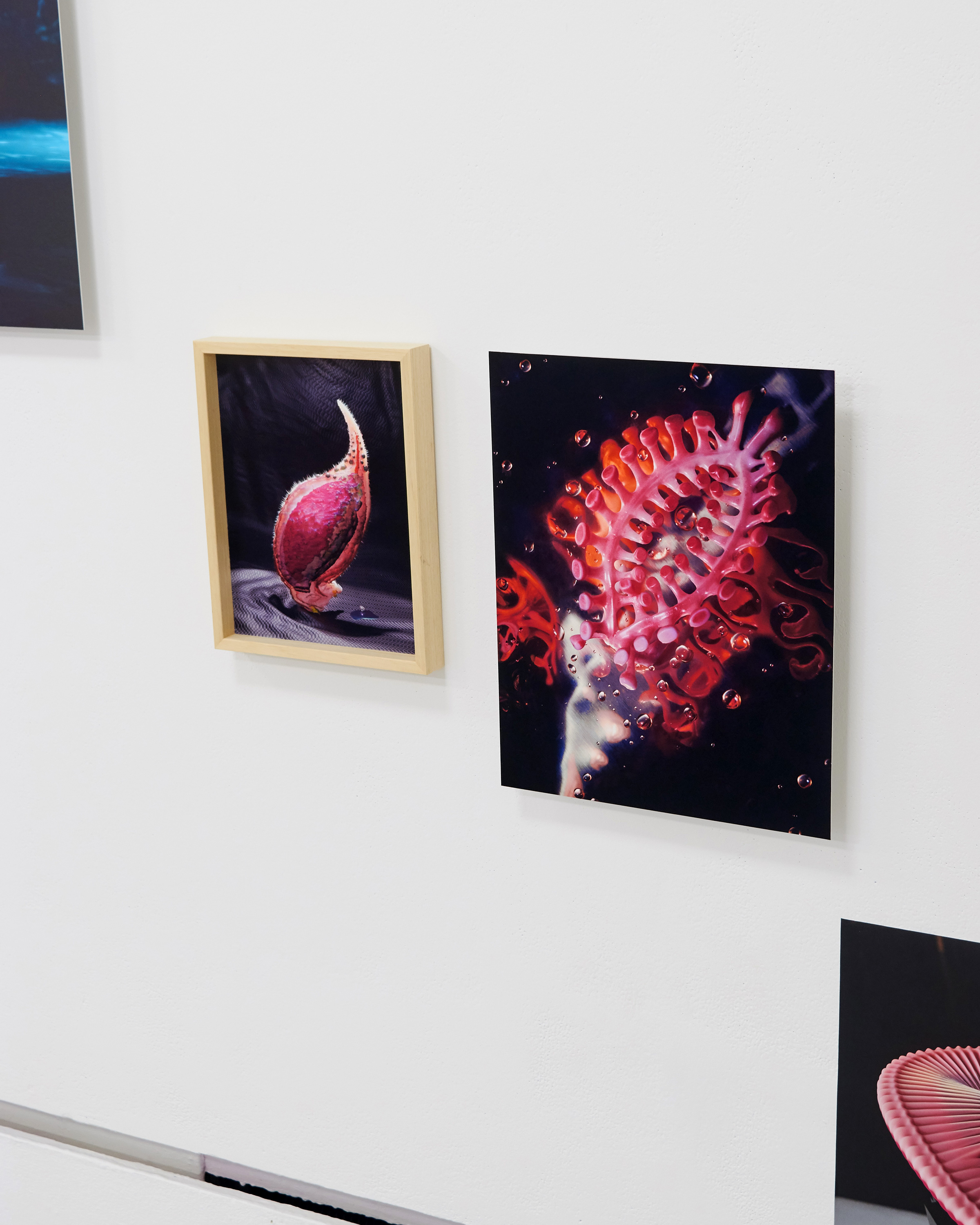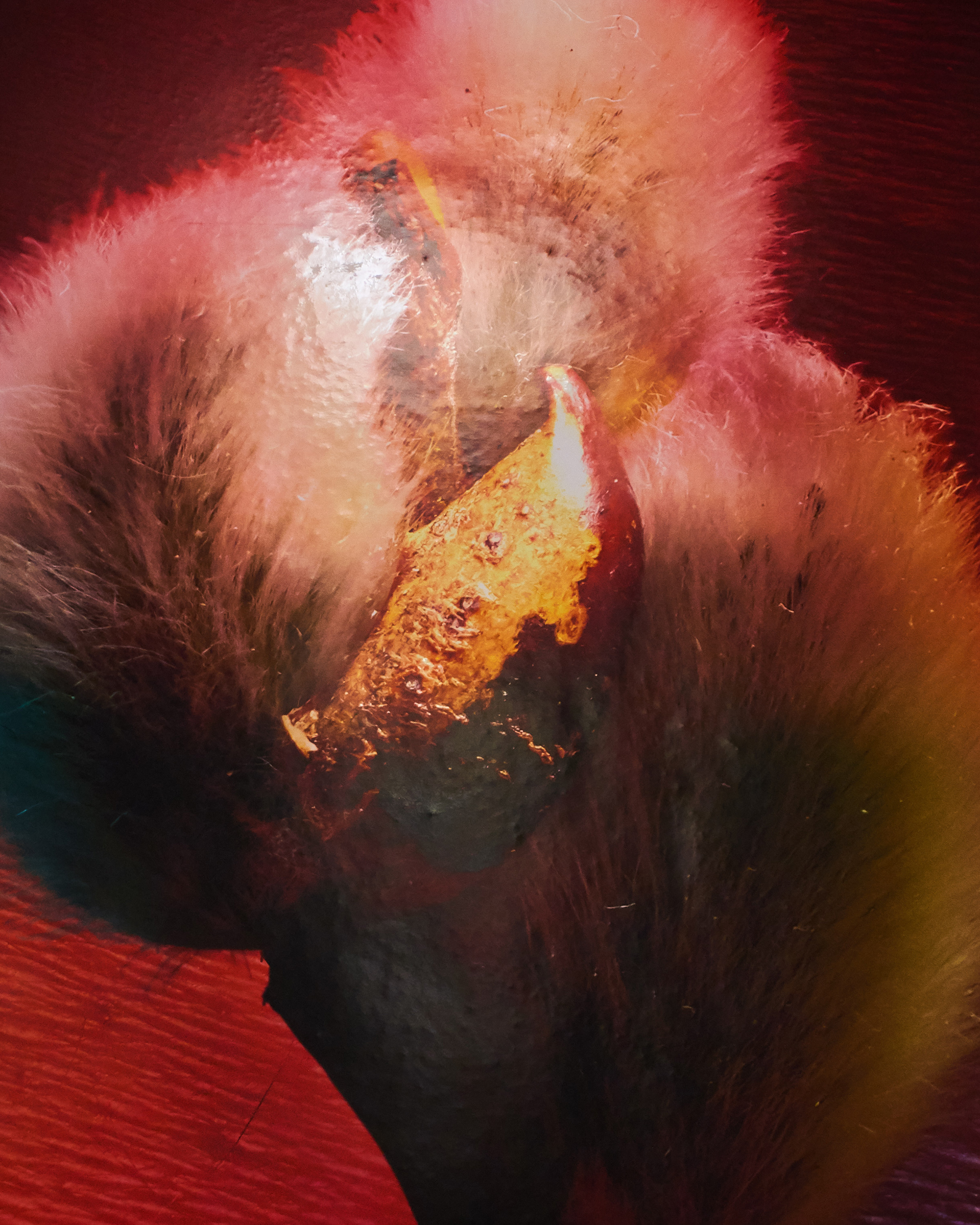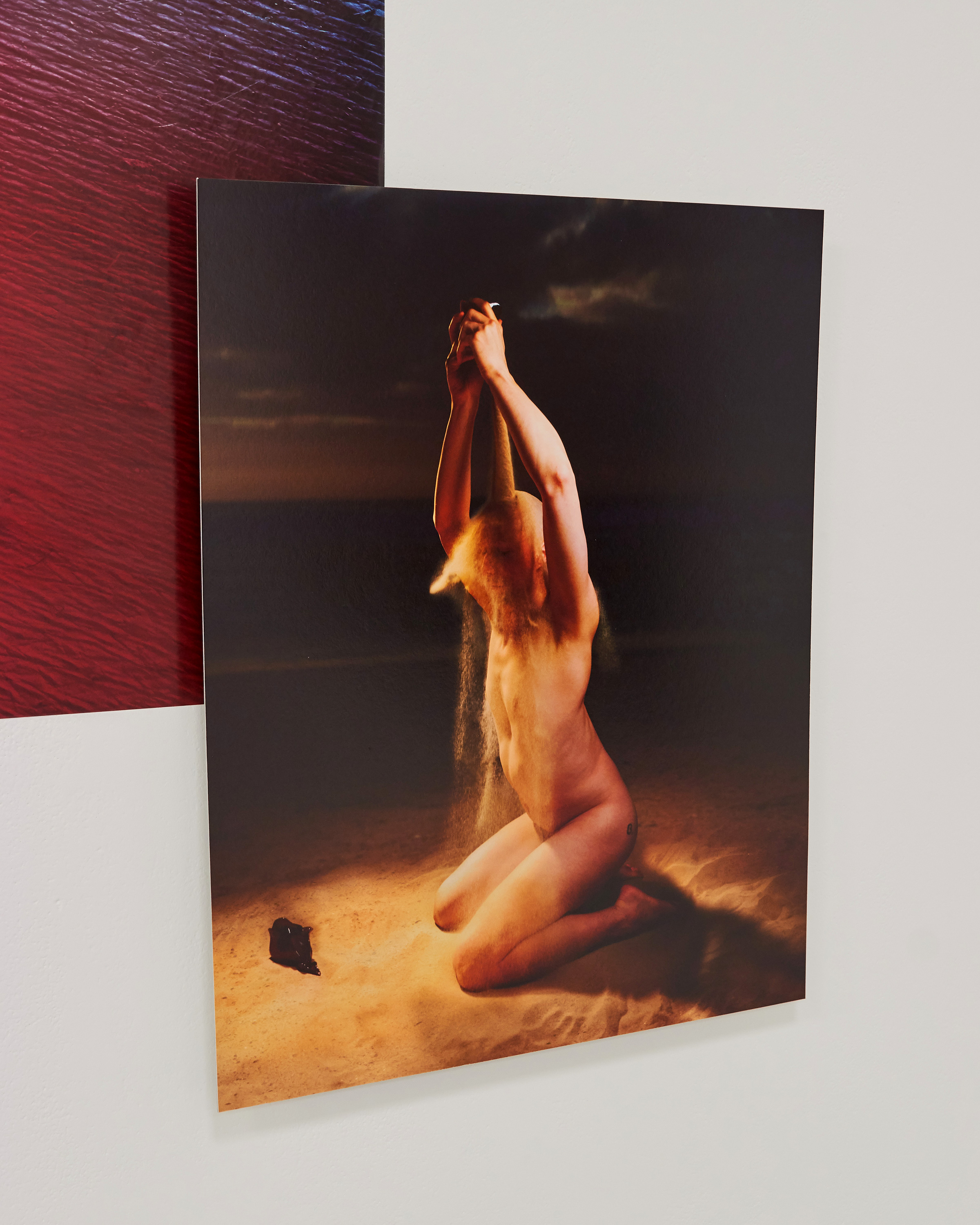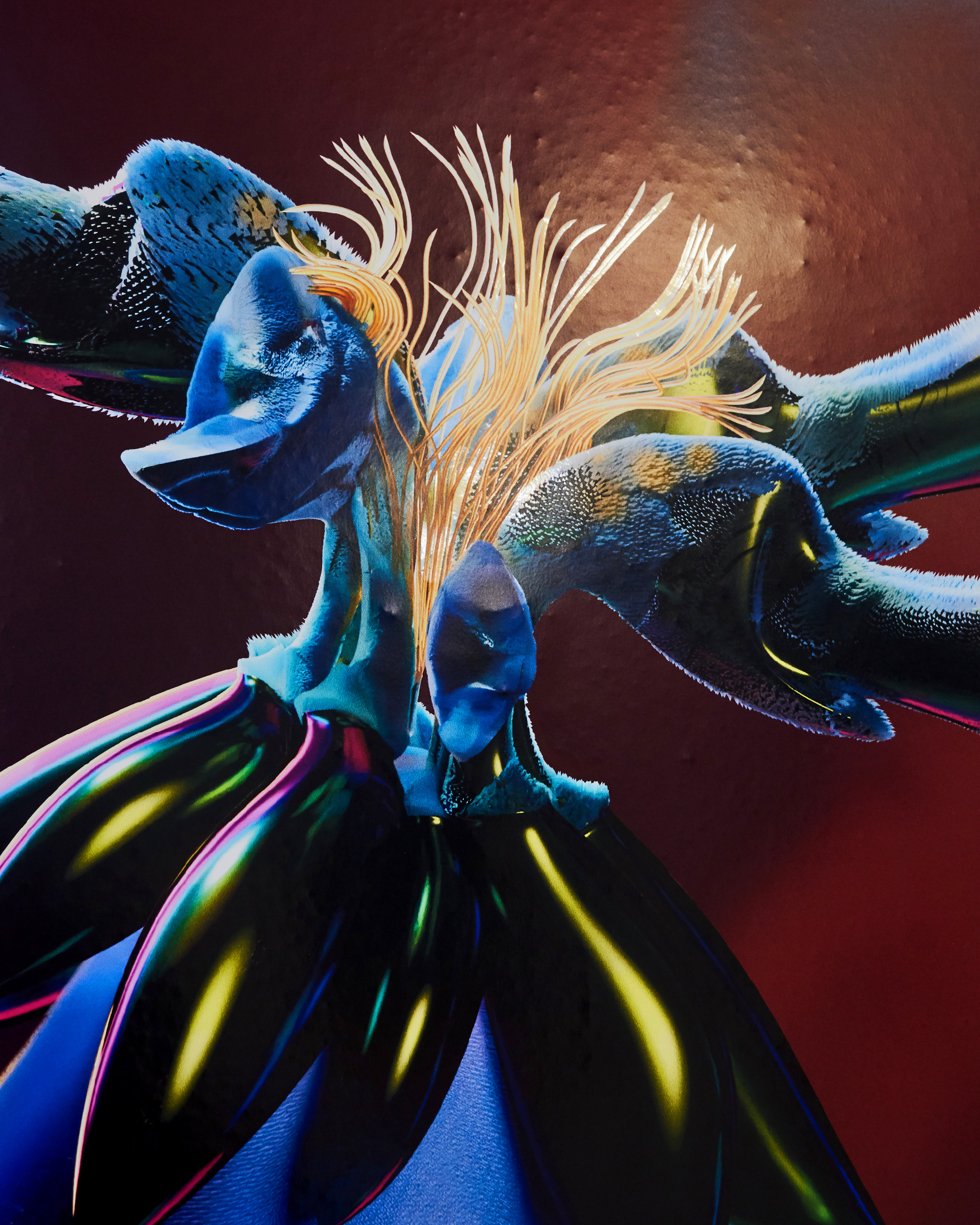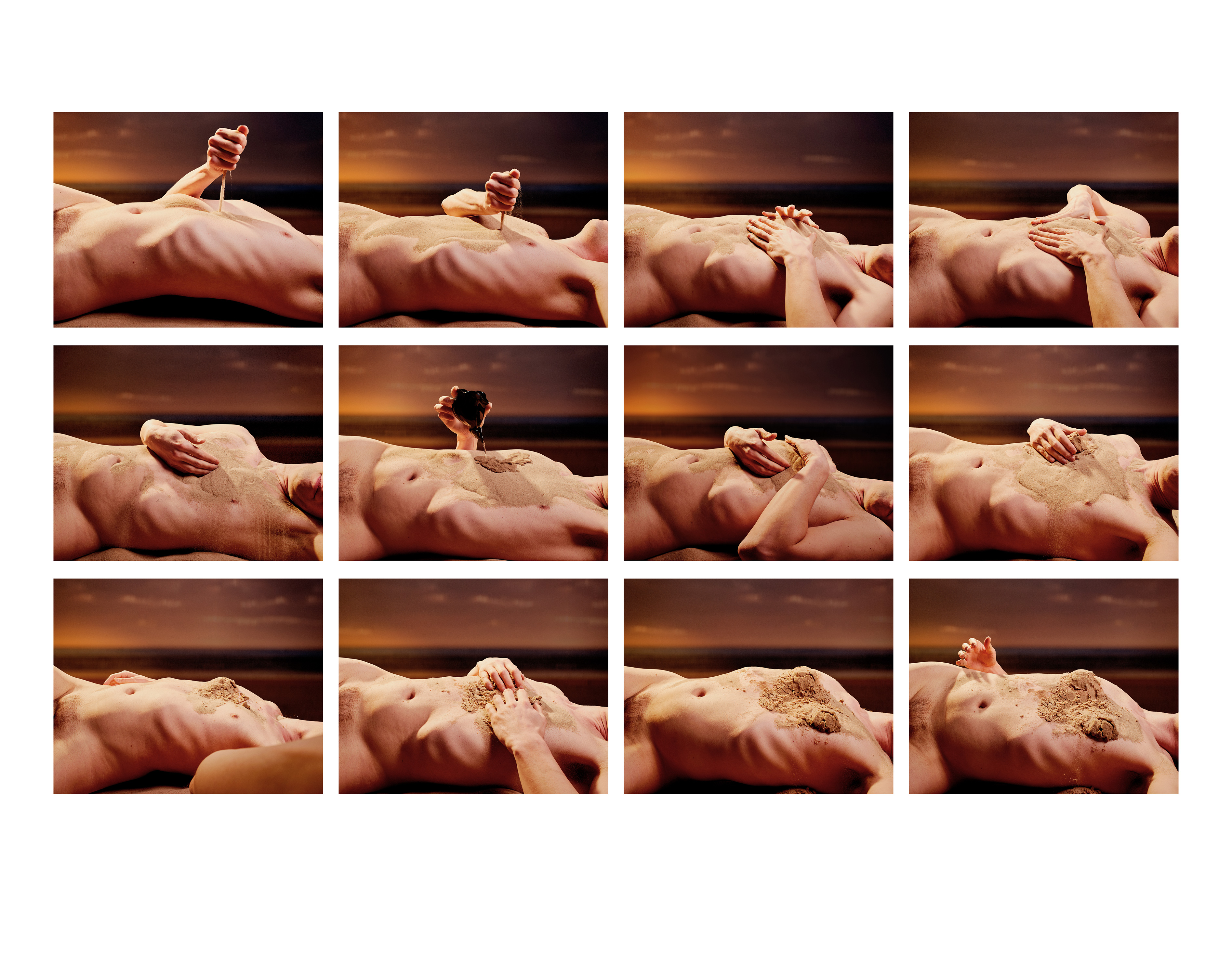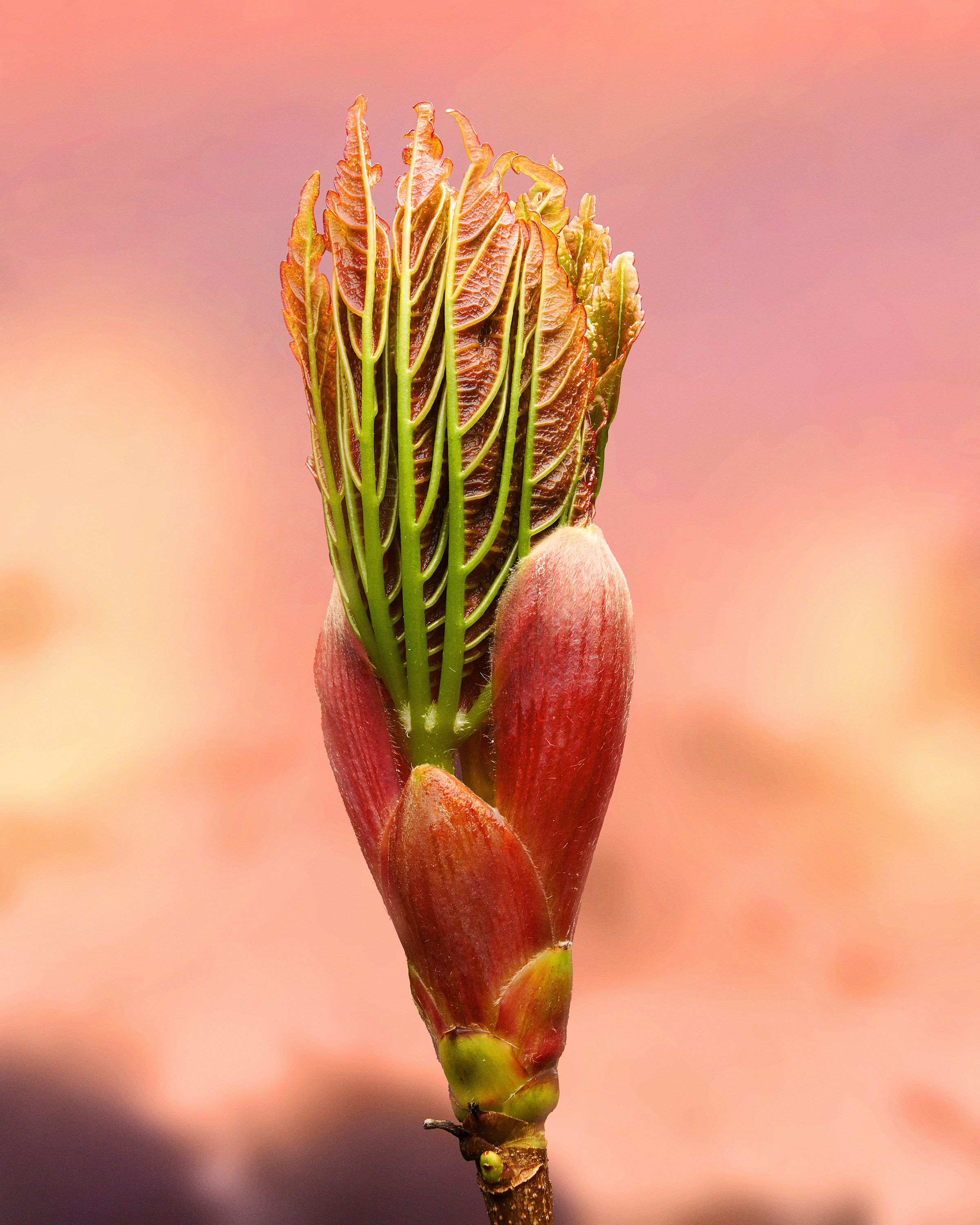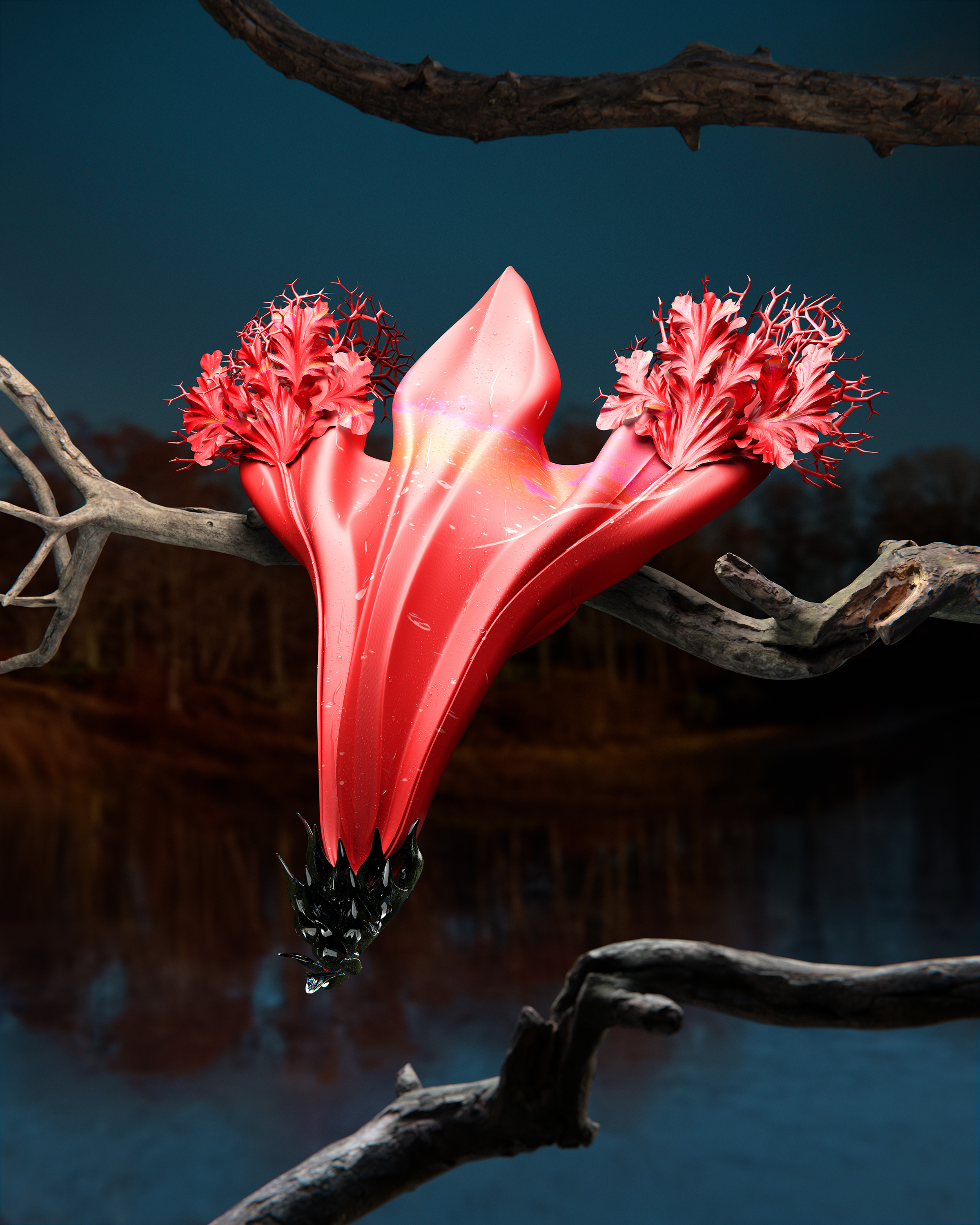An imaginary garden with real toads in them
Photograhy
Print on adhesive vinyl
and ultra smooth Hahnemühle, dimension variable + laser paper for writing elements
2020-2024*
An imaginary garden with real toads in them is a photography project that re-envisions transness and dysphoria through the lens of interspecies relationships. The series is influenced by the poetics of late modernist
poet Marianne Moore, whose work represents non-human bodies without attempting to wholly capture or dominate them. An imaginary garden similarly conjures transspecies textures, qualities and essences without exploiting animal labour or seeking to replicate scientific ‘accuracy’.
Throughout the series, there is a leitmotif of torso imagery. The human torso is a mythologised, politicised and gendered part of the body; it is a site of struggle concerning sexualisation, breastfeeding, ideals of the ‘right’ kind of torso to fit a binary gendered system, and representation of post-op bodies.
As this project explores, the historical development of body signal sensors for lie detection and surveillance is also rooted in this region of the body. Mixing images of my torso with non-human elements allows me to reclaim dysphoria from pathology, instead exploring possibilities of ‘becoming with’ that challenge queerphobic and humanist notions of the default, or ‘correct’, body.
Adopting a speculative approach, the use of of mix of photography and 3D imagery, virtual fur, 3D collage and other imagined animalistic shapes, An imaginary garden creates a sensual, dreamlike aesthetic of undying queerness and future potential existence. This project transports Moore’s ethics into a contemporary posthuman visual offering, reclaiming the transbody from continuing legacies of control, pathologization and surveillance. It invites viewers of any gender into a space of fantastical embodiment.
*Text description and exhibition text by Ruby Lawrence












